Introducing the Modern Europe
Classical Library
The Library
Electronic Texts
Curriculum Choices
Modern European History
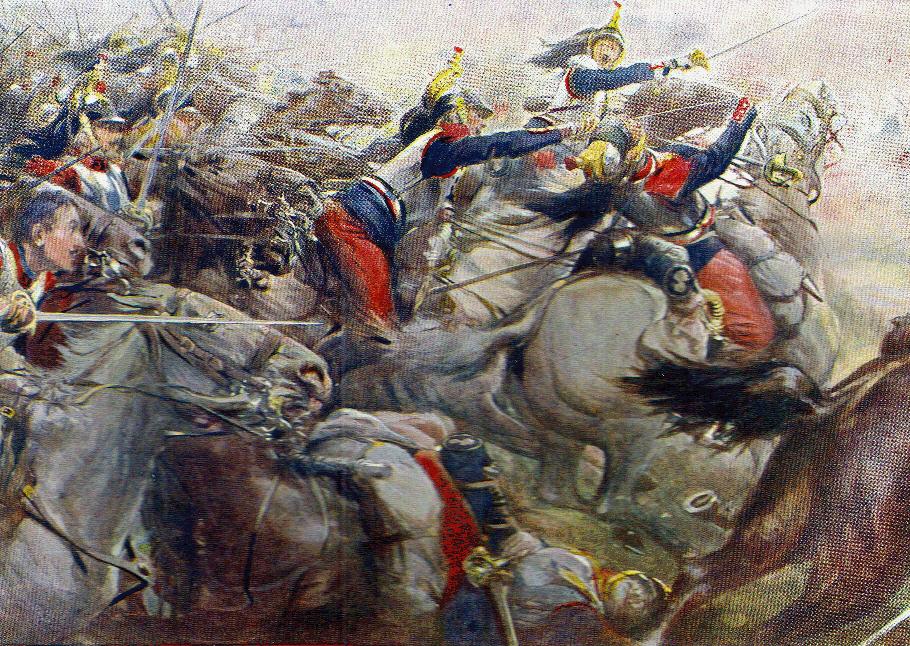
Prussian cavalry cuts off the retreating French at Mars-la-Tour
Welcome to the Heritage Modern Europe Classical Library. If you have never used
a Heritage History Library before, this page will help explain how the
information included in the Modern Europe library is organized and how it
may be used for independent study.
The Library
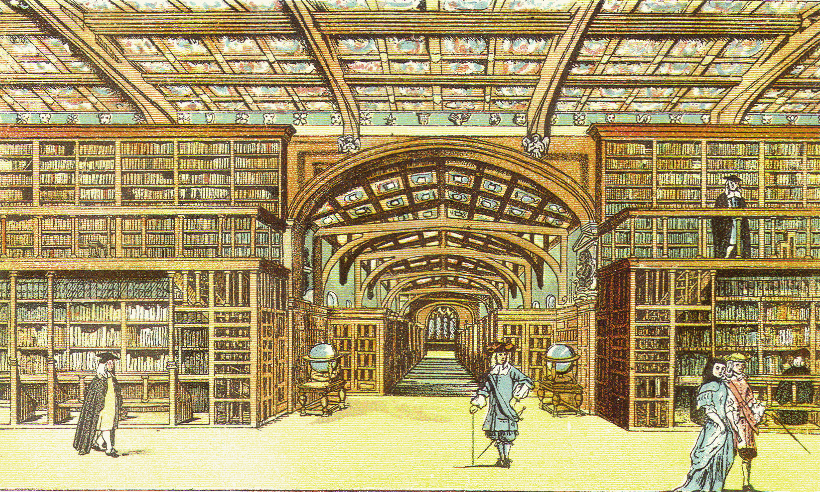 The page you are looking at appears to be a website, but it is not. It uses the same
software that you are accustomed to using when you browse the internet, but
instead of going over the network to access data files, it is reading them directly
from the Classical Library on your computer.
The page you are looking at appears to be a website, but it is not. It uses the same
software that you are accustomed to using when you browse the internet, but
instead of going over the network to access data files, it is reading them directly
from the Classical Library on your computer.
What this means is that all of the books that you link to in this environment
are available for you to view, print, or download to another device.
You don't need to pay any additional fees to copy these books to a Kindle, iPad or
other e-reader device, and you don't need to have access to the internet to view
them on your own computer. Best of all, you don't need to worry about
copyright violations
if you choose to print or copy anything from the Modern Europe Library
for your personal use.
The Modern European Classical Library contains over fifty traditional history
books written especially for young people. It includes books at reading levels
from fourth grade to high school and each
book is presented in three different formats so students can read them on their
home computer, make printed copies, or download them to their e-reader device.
Instructions for using electronic books in various formats are provided
in the Electronic Texts User Guide.
The contents of the Modern European Library can be referenced
by subject, genre, or reading level. Each entry includes the book’s title,
author, size, and links to three electronic formats. Software that "reads"
electronic books is required to view these files, but the Adobe Reader,
which displays the PDF version of each book,
already exists on almost all personal computers, and other electronic reader software can be
downloaded for free from the internet.
All of the books in the Modern European Library deal with 18th through 20th
century European history, but the
By Subject page organizes them into more
specific topics.
France,
Prussia and Germany,
Italy and Austria,
Russia,
Overall European, and the
Great War are subject categories
that focus primarily on regions or specific topics rather than providing
a broad overview of all modern European history.
In addition to subject, the collection of Modern European history books
can also be referenced By Genre. Heritage History genres include
Comprehensive histories, which cover national histories chronologically,
Episodic histories, which treat a particular incident or era,
Military histories, which focus on battles and military heroes,
Biographies, which include both collections of short character sketches, and
longer individual life stories. Finally, the
Adapted Literature category includes fiction as well as
classical legends.
Lastly, the Modern European library provides lists of its books
sorted
By Reading Level. Books intended for grammar school students are listed in
Green, books appropriate for middle schoolers are listed in
Brown, and those recommended for more mature audiences are listed in
Red. This color scheme is used throughout the Library to
reflect reading level.
In addition to providing book lists organized by subject, genre, and reading level, the
Modern European Library contains several additional reference pages intended to help
students and instructors identify books of particular interest. The
Book Summaries page includes a short
description of each book in the library. The
Series Descriptions page, which features descriptions of
overall series rather than individual books, may be helpful to those
readers who enjoy a particular book and would like to locate similar volumes.
Finally, the
Recommendations page provides specific reading
recommendations for core reading assignments for various age groups.
Using Electronic Texts
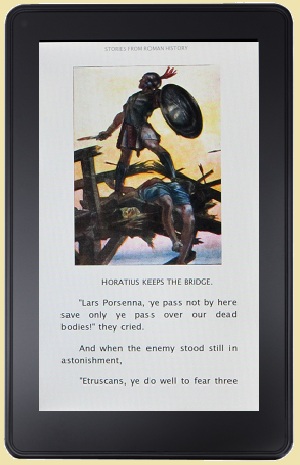 In order to make our entire library of traditional history books available at an
affordable price, Heritage History provides low-cost versions of all of our
books in both electronic reader and printable format. By doing so, we
can provide a large library of high quality texts at an affordable price.
In order to make our entire library of traditional history books available at an
affordable price, Heritage History provides low-cost versions of all of our
books in both electronic reader and printable format. By doing so, we
can provide a large library of high quality texts at an affordable price.
Unfortunately, not all users of the Heritage libraries are up-to-date regarding
the most recent advances in electronic books technology. In order to
help our users make informed decisions about usage and purchases of
electronic readers and desktop publishing tools, we have provided an
Electronic Text User Guide. It is
divided into three main sections that deal with issues related to
electronic readers, self-publishing, and copyright restrictions.
The Heritage guide to
Electronic Readers discusses the differences
between various e-reader technologies and gives detailed
instructions for downloading Heritage e-books from a Classical Library CD
to an e-reader device such as Kindle or Apple iPad.
For those who prefer reading hard-copies rather than e-books, the Heritage guide to
Self-publishing provides tips for printing
and binding the books from the Heritage library at home in an efficient and cost-effective
manner. Finally, the terms and conditions of using the electronic texts are
discussed in the
Copyright Terms section.
A printable copy of the Heritage
Electronic Texts User Guide
is available, and we
recommend that anyone who is not already familiar with e-reader technology,
laser printers, and binding equipment read the guide before deciding
how to use the Heritage e-book library. Even technologically
advanced readers should familiarize themselves with the copyright
status of the Heritage books before beginning the program.
If you still have
questions after reading the Electronic Text User Guide, refer to the Electronic Texts
Frequently Asked Questions.
Curriculum Choices
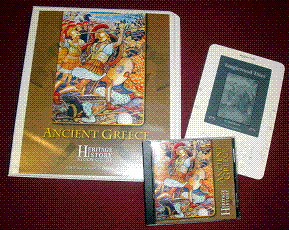 Heritage History offers two different versions of its Compact Libraries. The
Classical Curricula, which include Ancient Greece, Ancient Rome,
British Middle Ages, and others, are composed of both a library of books and an
organized collection of proprietary study materials. Each Classical Curriculum
CD can be used as a self-contained, reading-based curriculum since it covers
all aspects of its subject civilization, complete with maps, timelines, and
recommended reading lists.
Heritage History offers two different versions of its Compact Libraries. The
Classical Curricula, which include Ancient Greece, Ancient Rome,
British Middle Ages, and others, are composed of both a library of books and an
organized collection of proprietary study materials. Each Classical Curriculum
CD can be used as a self-contained, reading-based curriculum since it covers
all aspects of its subject civilization, complete with maps, timelines, and
recommended reading lists.
The Classical Libraries, on the other hand, include only a collection of books but
no additional study materials, Curriculum Guide, or Study Guide.
Although we do not promote the Classical Libraries as self-contained
curriculums, they can be used as a basis for a complete course of study by
instructors who are satisfied with a reading-only approach or who are willing
to augment with their own study materials. Alternatively, the Classical
Libraries can provide books to students of any age who would like to read for
personal enrichment.
It is not necessary to choose between a Heritage Classical Library and
a more conventional curriculum. In addition to promoting our own program,
Heritage History provides inexpensive resources than can be used with
other traditional curriculums such as Ambleside, Charlotte Mason, or Tapestry of Grace.
Heritage History was first conceived of as a library rather than a
curriculum. Our original intent was to provide
elective resources that motivated students might read for
depth and interest, rather than a core series. For this reason,
we believe that the Heritage Libraries can complement, rather than compete
with other high quality curriculums.
Although Heritage History emphasizes a "living books" rather than a textbook
approach to history, the Classical Libraries can be used to supplement
traditional, textbook-based history programs. Textbooks sometimes do a thorough
job of presenting all of the major topics related to a particular history in a
systematic fashion, but omit most of the interesting stories from history. The
Classical Libraries correct this deficiency by providing engaging stories that
highlight the most famous characters and episodes from history.
The Heritage Classical Libraries were designed to be flexible. They are intended
to appeal to students with a wide range of interests and to instructors with a
wide range of teaching styles. Each library contains many
more books than any student is likely to read during a single academic term, but
this is because the Heritage libraries were designed for lifelong learning
rather than a brief survey. The
reading recommendations included with most
libraries provide for a comprehensive overview of the subject civilization
sufficient for intermediate students. But each library also includes many
books that offer in depth treatment of particular historical episodes for
more advanced students. Learning the basic stories of history is essential, but
the Heritage Classical Libraries offer far more than the fundamentals.
Most of the Heritage Classical Libraries will eventually be upgraded to full
Curriculums. A printable version of the
Curriculum User Guide
has been provided for families who are interested in the independent study
program associated with the Heritage Classical Curriculum.
Modern European History
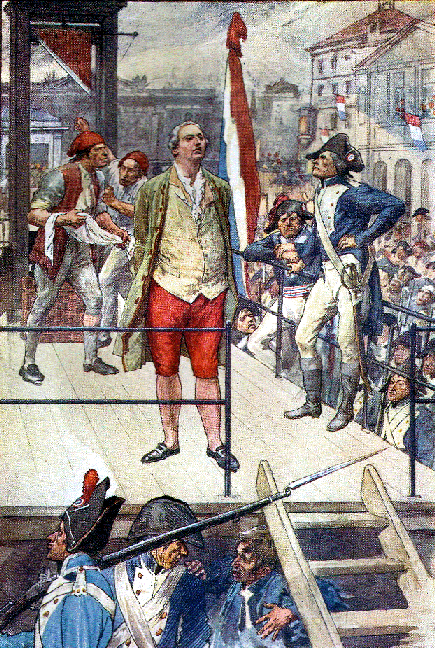 The history covered by the Modern Europe library begins with
the effects of the Enlightenment on the Christian kingdoms of
continental Europe and ends with the cataclysmic World Wars of the
early 20th century. The growing influence of Prussia; the Revolution
and political turmoil in France; the Unification of Italy; and the
rise of Russia are four of the major topics covered in this
period, but in the story of all four nations one sees the conflict
between degenerate Christian monarchies and the movement for representative
government.
The history covered by the Modern Europe library begins with
the effects of the Enlightenment on the Christian kingdoms of
continental Europe and ends with the cataclysmic World Wars of the
early 20th century. The growing influence of Prussia; the Revolution
and political turmoil in France; the Unification of Italy; and the
rise of Russia are four of the major topics covered in this
period, but in the story of all four nations one sees the conflict
between degenerate Christian monarchies and the movement for representative
government.
The nineteenth century was a period of enormous political
upheavals and technological change. By the eighteenth
century the British government had already moved from an autocratic
monarchy to a parliamentary system and had established civil
liberties unknown in other parts of Europe. Many sincere patriots
looked to Britain's freedoms and
prosperity and sought to reform their own governments
according to constitutional principles.
Unfortunately,
the relative peace with which Britain evolved towards a more
liberal government was not easily duplicated. The forces in favor
of "reform" on the continent were no longer primarily Christian in
worldview. The political object of the Reformation in England was simply to
oppose Roman interference in national government—not to dismantle the church,
overtake its educational and charitable functions, and upend traditional
Christian civilization. Not all Republicans or reformers on the continent
were anti-Christian, but even those who did not want to overthrow
the church altogether sought to make it subservient to the state.
For this, and many other reasons, Europe's path to constitutional government was
far bloodier than that of England or America, and involved a series of
revolutions, massacres, anarchies, cataclysmic wars, dictatorships,
and totalitarian regimes, all promulgated in the
name of liberty. As Madame Roland, a great French patriot
said as she was sent to the guillotine: "O Liberty! What Crimes are
committed in thy name."
Because much of the conflict in Europe during the 18th and 19th centuries was
driven by political ideology, technological evolution, and
humanist philosophy, it is a difficult period for young readers to understand.
To make complex matters more
confusing, most historical accounts produced during the
late 19th and early twentieth century were blind to the dangers posed
by the secular, ambitious governments and give optimistic accounts of events.
In the name of reform many pillars of Christian
civilization were tossed aside as impediments to "social progress". It wasn't
until the modern, secularized states of Europe unleashed the full range of their
destructive powers upon each other, that the world began to see the
inevitable results of the loss of Christian restraints on national governments.
It is impossible for advanced students to really understand this period
of history without some knowledge of 19th century philosophy, but that
is beyond the scope of this library. What it can provide, however, is
an excellent introduction to some of the most dramatic stories in all
of world history. Among these are the French
Revolution and Reign of Terror; the Napoleonic Wars; the
Rise of Prussia and the formation of the German Empire;
the Franco-Prussian War and the Paris Commune; the rise of the Russian Empire;
Garibaldi and the Unification of Italy; and finally the Great War and
Bolshevik Revolution. Behind each of these events, of course,
was a complicated web of intrigue, secret societies, and anti-clerical
activism whose significance was not generally understood. The disastrous
wars, revolutions, and totalitarian regimes of the 20th century caught
many people in the West unaware, in spite of the fact that the
political, philosophical, and military groundwork for these catastrophes
was laid over a long period of time.
The catastrophes in "Modern Europe" are still ongoing. The "debt" crisis,
the "euro" crisis, an unsustainable welfare-state, and most significantly,
the "demographic" crisis threaten
to undermine the very foundations of European civilization.
The secular, materialist philosophies that overtook Christian
Europe in the 18th century have been propagated for generations by
compulsory, secular state-education, and are still doing their civilization-destroying
work. As Americans, we owe much of our cultural heritage to Europe, but
if modern European civilization can no longer serve as an inspiration to us,
then let it be studied as a warning.
"It is the great paradox of the modern world that at the very time when the world decided that people
should not be coerced about their form of religion, it also decided that they should be coerced about
their form of education."
G. K. Chesterton
|





